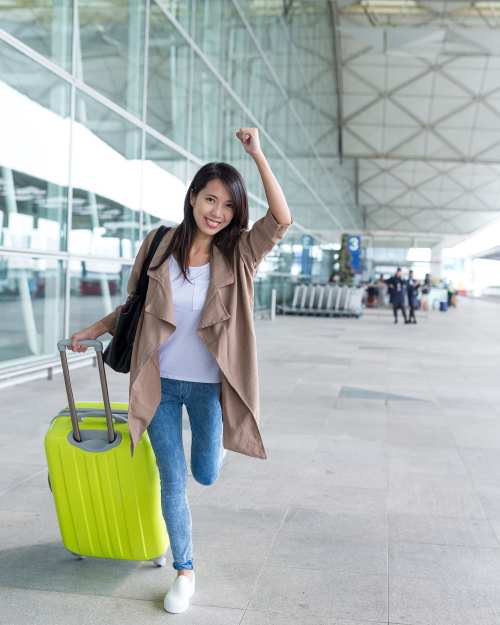What To Expect from U.S. Customs During International Travel
Besides packing, booking, and double-checking, it’s important to add familiarizing yourself with the U.S. Customs and Border Protection to your to-do list before you set off to the Sunshine State. With millions of travelers entering the U.S. daily, the CBP helps ensure the safety of American citizens and incoming travelers. By learning about what you should/shouldn’t bring along, and CBP routine practices, you’ll help make your customs experience as smooth as possible.
Before You Board
First things first: Make sure you’ve got all your required documents ready to roll. Though requirements vary by country of origin, all travelers need a valid passport, and most travelers need an ESTA approval. ESTA is an automated system that checks the eligibility of travelers to enter the U.S. (you can apply here).
ESTA approval is a required form of ID if you are eligible for the Visa Waiver Program, so print out your approval and be ready to show it at customs.
It’s also good to check out CBP’s list of prohibited items to ensure you’re not packing anything that’s not allowed.
In Flight
Once you’ve gotten through security and are a comfy 37,000 feet in the air, you’ll probably be handed the CBP Declaration Form 6059B. (Don’t fret if you don’t get it on board; you can find it at customs.) This form declares any goods you are bringing along for your trip, as well as any exposure you’ve had to certain agricultural and wildlife products. Keep in mind that only one of these forms is needed per family. Having a pen handy will save you time, since you can fill the form out before landing, and walk straight to the customs counter without having to fill it out at the airport. (The hunt for that one working pen station is no fun.) It’s important to note visitors no longer need to complete Forms I-94 or I-94W, and can access status records online.
At U.S. Customs
You’ve landed, grabbed your carry-on, and are headed to the customs area. What now? Upon arrival at customs, U.S. citizens and lawful residents will stand in one line, while international travelers will be in another; make sure you’re in the correct line to save time. Once you’re in line, have your passport and US Customs Declaration Form handy, since your assigned customs official will ask for it. After handing over your documents, it’s very likely you’ll be asked for a digital fingerprint, as well as a photograph. Your customs official will then ask some basic questions about your trip purpose, length, and details about your accommodations. If you have nothing to declare, you can head to baggage claim. A CBP agricultural officer may ask to search your baggage on your way out; this is routine and isn’t anything to worry about. Once you’ve grabbed your checked luggage, congratulations! You’ve cleared customs.
Some Extras
It’s a good idea to come prepared with cash. If you’re missing a form, have problems with application payments, or run into trouble, you’ll likely need cash to complete transactions and clear any necessary paperwork. Credit cards may be accepted for these transactions, but international cards often run into errors once abroad. Call your bank ahead of time, and set a travel notice to ensure your accounts aren’t frozen. When it comes to declarations, be straightforward about your goods and gifts to avoid confiscation, or problems with the law.
There you have it, the scoop on customs and international travel requirements. From documents and forms, to standard practices and avoiding setbacks, use this list to fly confidently, prepared, and excited to hit the crystal-clear Floridian waters.




























